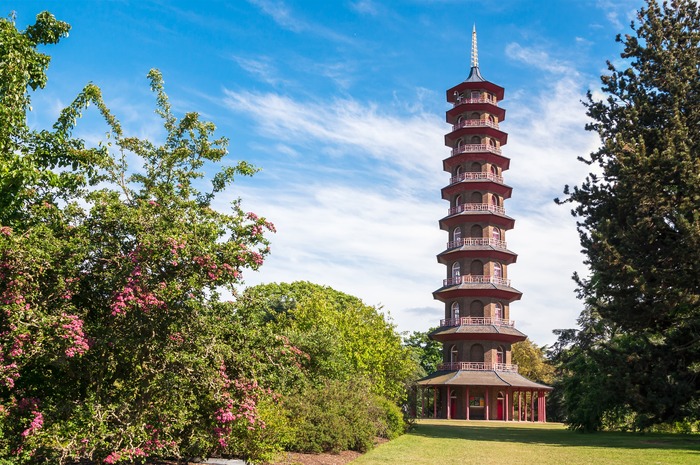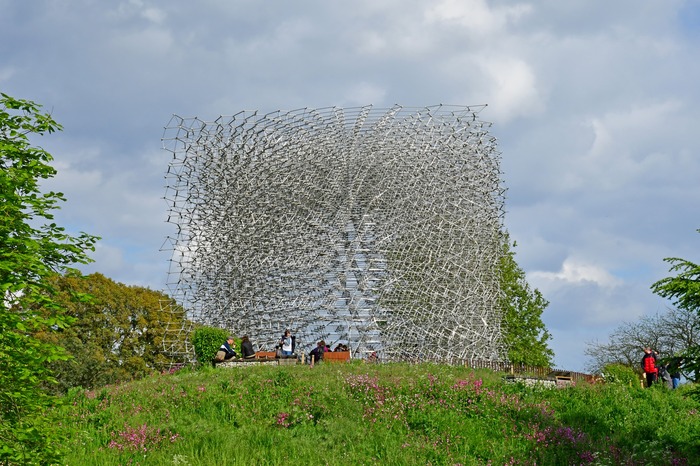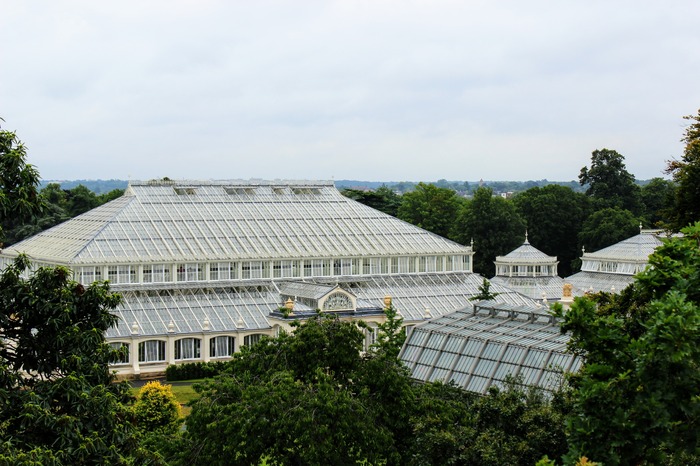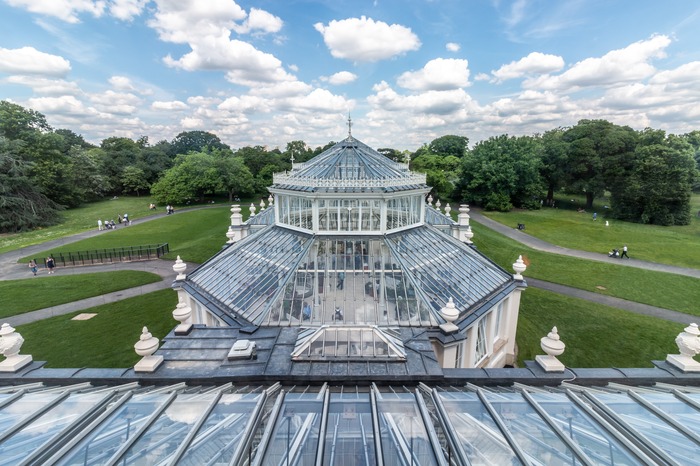
What to see at Kew Gardens?
Located in London, in the district of Richmond, the Royal Botanic Gardens of Kew - known as Kew Gardens - are the only botanical gardens in the world to be listed as UNESCO World Heritage (since July 2003).
With an area of 120 hectares, they have the largest collection of living plants in the world (more than 50,000 species), distributed in 8 greenhouses and galleries - all dedicated to botanical art, research and conservation of plants.
They welcome more than 1 million visitors each year.
advertisement
History of Kew Gardens
Until 1840, the Kew Botanical Gardens were a place of royal residence: the White House (also known as Kew House) and Richmond Lodge (also known as Dutch House) were the summer residences of the British Royal Family.
Passionate about botany, it is to the royal wives that the royal gardens owe their transformation into superb botanical gardens. For example, Queen Caroline and Princess Augusta introduced the first exotic plants from other countries, brought back by British explorers.
With the help of architect William Chambers, various buildings were erected, such as The Great Pagoda - 10 stories high and oriental inspiration, which can be seen for miles around.

The famous botanist Joseph Banks also took care of the Kew Botanical Gardens for many years, which also became a center of study and research.
The gardens were donated to the British government in 1840.
Visit Kew Gardens
Almost 40 buildings are present in the Royal Botanic Gardens of Kew: greenhouses, palaces, museums, restaurants, cafes, shops - and a library housing more than 750,000 books!
You will also find:
- The Great Pagoda: completed in 1762, it is an emblematic symbol of the friendship between England and China.
- a Japanese garden
- a Mediterranean garden
- a lake
- an art gallery displaying many works by Victorian artists
- a museum dedicated to the best artistic works on botany
- Treetop Walkway (created by Marks Barfield Architects, the same agency that designed the London Eye): a 200m long walkway, perched at 18m height and accessible by elevator or by a staircase of 118 steps - which allows you to walk up to the treetops!
- The Hive: a giant structure representing the relationship between plants and bees.

A visit to the Royal Botanic Gardens of Kew is appreciable in any season. Whatever the time of year, there are always species of flowering plants:
- Spring: Queen Charlotte's Cottage Gardens is covered in wild hyacinths - also known as Cluster Muscari - and rhododendrons.
- Summer: blooming roses and water lilies.
- Autumn: best season to visit the Bruyère garden, near La Pagode
- Winter: Christmas lights at the Kew Botanical Gardens - known as Christmas at Kew - and the sound and light show on the Palm House are events not to be missed!
Plan a full day to hopefully discover all of the gardens - otherwise you can opt for a guided tour of the park by shuttle!
A garden plan will be given to you at the entrance to the park.
Greenhouses at Kew Gardens
The greenhouses of the Royal Botanic Gardens at Kew are filled with tropical plants - most of which have been found there since the park's inception, that is, for several centuries.
There are 4 of them:
- Temperate House: designed by Decimus Burton, it was for many years the largest greenhouse in the world - and today has the largest greenhouse plant (a Chilean vine from 1846). The plants are classified there according to their geographical affiliation.
To see the greenhouse as a whole, use the circular staircase that leads to its roof.


- Palm House: also imagined by Decimus Burton, it was inaugurated in the 19th century - 40 years interval with the Temperate House. It is home to a wide variety of tropical plants from all over the world: Africa, America, Asia, the Pacific, etc. - which coexist with many fruit trees (banana trees, mango trees, papaya trees, etc.) and an impressive collection of palm trees.
The basement of the Palm House has a superb aquarium.
- Princess of Wales Conservatory: This is the largest and newest greenhouse in Kew Botanical Gardens - inaugurated by Princess Diana in 1987. It features 10 climate zones.
- Center for Economic Botany: located in the Joseph Banks Building, it is mainly used for research on the economics of botany.
Kew's large library occupies the rest of the building.
Kew Gardens tickets
Take advantage of the best price by purchasing your tickets from one of our partners:

advertisement
The ticket price for the Royal Botanic Gardens at Kew includes access to all facilities and attractions.
Entrance to the Royal Botanic Gardens, Kew is included in the London Pass and free for group members Friends of Kew.
Kew Gardens opening times
The Kew Gardens are open year round:
- Monday to Thursday 10 a.m. to 7 p.m.
- From Friday to Sunday from 10 a.m. to 7:30 p.m.
The last admissions take place 1 hour before closing.
Like many monuments, museums and attractions, the Royal Botanic Gardens at Kew are closed on December 25.
How to get to Kew Gardens
The Royal Botanic Gardens of Kew are located in the Richmond district: TW9 3AB, London - close to the famous Richmond Park.
To get there, 2 options:
- Metro: District line, Kew Gardens or Richmond Station stop.
- Bus: lines 190, 391, 419, R68, 33, 337, 485, 85, 265, K3, 72, 493, 65 and 371.
Close to Kew Gardens
Take advantage of your visit to the Royal Botanic Gardens in Kew to visit:
- Ham House
- Hampton Court Palace
- Marble Hill House
- Richmond Park
- Richmond Bridge
- Twickenham Stadium